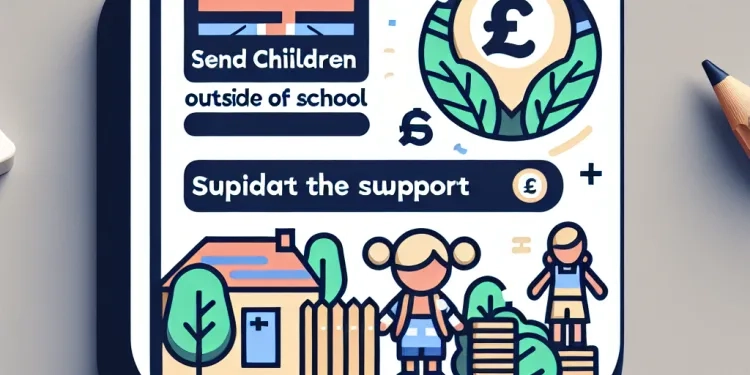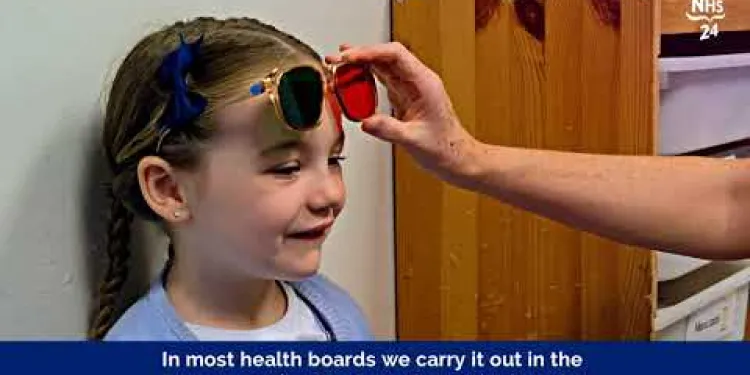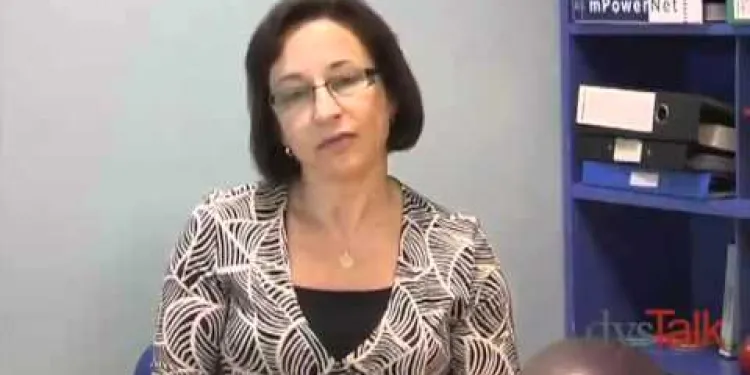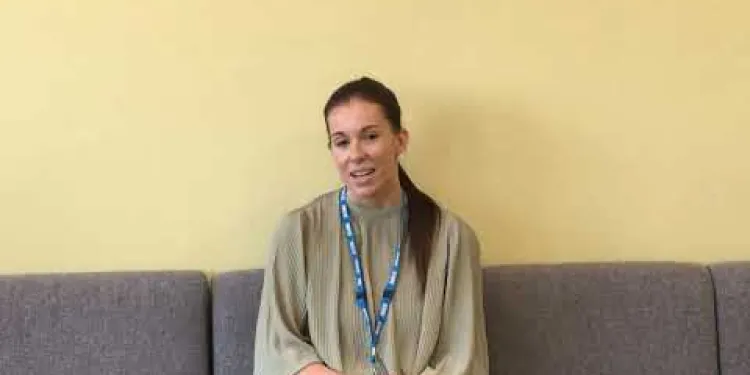
Find Help
More Items From Ergsy search
-

What support is available for SEND children in schools?
Relevance: 100%
-

Do SEND children attend mainstream schools?
Relevance: 93%
-

What support is available outside of school for SEND children?
Relevance: 92%
-

How can schools create an inclusive environment for SEND children?
Relevance: 82%
-

What are SEND children?
Relevance: 81%
-

Who are SEND children?
Relevance: 80%
-

Are there specific laws governing SEND in schools?
Relevance: 76%
-

What role do teachers play in supporting SEND children?
Relevance: 73%
-

Can SEND children access extracurricular activities?
Relevance: 73%
-

How is progress measured for SEND children?
Relevance: 70%
-

How do funding and resources affect SEND support?
Relevance: 67%
-

What are some common misconceptions about SEND?
Relevance: 58%
-

How are parents involved in the SEND process?
Relevance: 57%
-

What does SEND stand for?
Relevance: 55%
-

Can children with disabilities access school meals?
Relevance: 53%
-

Can SEND status change over time?
Relevance: 53%
-

What is the SENCO's role in a school?
Relevance: 52%
-

Who is responsible for assessing SEND needs?
Relevance: 51%
-

What are some common types of SEND?
Relevance: 45%
-

See4School
Relevance: 44%
-

How are school meals provided in the UK?
Relevance: 43%
-

What is the purpose of providing school meals in the UK?
Relevance: 42%
-

Dyspraxia Children: How to Help
Relevance: 41%
-

Are school meals free for all students in the UK?
Relevance: 41%
-

Who is responsible for providing school meals in the UK?
Relevance: 40%
-

What is the average cost of a school meal in the UK?
Relevance: 39%
-

Can I send money to an inmate?
Relevance: 38%
-

Who provides the funding for free school meals in the UK?
Relevance: 38%
-

What is included in a typical school meal in the UK?
Relevance: 37%
-

Understanding Mental Health in Children
Relevance: 37%
-

How can parents advocate for their SEND child?
Relevance: 36%
-

Are there educational components to the school meal program?
Relevance: 36%
-

What criteria must be met for a child to be eligible for free school meals?
Relevance: 36%
-

How are food allergies managed in UK schools?
Relevance: 36%
-

Navigating Mental Health Services for Children and Adolescents
Relevance: 36%
-

Practical strategies to support young children who stammer
Relevance: 35%
-

How can I identify if my child has SEND?
Relevance: 35%
-

Are school meals inspected for quality and standards?
Relevance: 35%
-

Calls to Ban Vapes Near School Grounds Gain Momentum
Relevance: 35%
-

Live Fear Free - The Effect of Domestic Abuse on Children
Relevance: 35%
Introduction to SEND Support in UK Schools
In the UK, children with Special Educational Needs and Disabilities (SEND) are entitled to various forms of support to ensure that they receive an inclusive and effective education. The goal is to identify and overcome barriers to learning, helping these children to achieve their full potential alongside their peers.
Identification and Assessment
The process of supporting SEND children begins with identification and assessment. Schools have a legal duty to identify children with SEND and assess their needs. This is often done through observations by teachers, assessments by educational psychologists, and input from parents and guardians. Once a child's needs are identified, a tailored support plan can be developed.
Individual Education Plans (IEPs) and EHC Plans
An Individual Education Plan (IEP) is a document that outlines the specific educational goals for a SEND child, the support they need, and how progress will be measured. For children with more complex needs, a more detailed Education, Health, and Care (EHC) Plan may be necessary. The EHC Plan provides a legal framework to ensure the child receives the appropriate education, health, and social care support.
Specialist Support and Resources
Schools in the UK offer various specialist support and resources to assist SEND children. This includes access to teaching assistants who can provide one-on-one support, the use of specialized equipment or resources, and differentiated teaching strategies that cater to the child's learning needs. Some schools may also have specialist units or facilities designed to support specific types of SEND, such as sensory rooms for children with autism.
Teacher Training and Support
Teachers in the UK are provided with training and resources to help them support children with SEND. This includes professional development courses on inclusive teaching strategies, understanding specific disabilities, and effectively using assistive technologies in the classroom. Additionally, schools often have a SEND coordinator (SENDCo) who is responsible for overseeing SEND provision and supporting teachers in implementing best practices.
External Support Services
Schools can access a range of external support services for SEND children. This might include speech and language therapists, occupational therapists, and educational psychologists. These professionals work collaboratively with schools to provide assessments, advice, and tailored interventions that help address the specific needs of children with SEND.
Parental Involvement and Collaboration
Parental involvement is crucial in supporting SEND children. Schools are encouraged to work closely with parents to develop and review IEPs and EHC Plans. Regular communication and collaboration ensure that the child's needs are being effectively met and that parents are actively involved in their child's educational journey.
Conclusion
In summary, UK schools provide a comprehensive system of support for SEND children, which includes identification and assessment, customized education plans, specialist resources, teacher training, and collaboration with external professionals and parents. These efforts ensure that SEND children receive equitable access to education and the opportunity to thrive in a supportive and inclusive environment.
Introduction to Help for SEND Children in UK Schools
In the UK, some children need extra help at school. This is because they have Special Educational Needs and Disabilities (SEND). These children get support to help them learn well. The aim is to find what makes learning hard for them and to help them do their best like other kids.
Finding Out Who Needs Help
Schools start helping SEND children by finding out who needs help. They have to do this by law. Schools watch the children to see what they need. They also ask special teachers and parents for their views. Once they know what a child needs, they make a plan to help them.
Education Plans
An Individual Education Plan (IEP) is a plan that says what a SEND child wants to learn, the help they need, and how to check if they are doing well. If a child needs more help, they might have an Education, Health, and Care (EHC) Plan. This plan makes sure the child gets the right school help, health care, and social care.
Special Help and Tools
Schools give different kinds of special help to SEND children. This includes having teaching assistants who help one child at a time. Sometimes, they use special tools or ways of teaching. Some schools have special rooms, like a sensory room for children with autism, to help them learn better.
Teacher Learning and Help
Teachers in the UK learn how to help SEND children. They take courses to learn new ways to teach and to understand different needs. Schools also have a SEND Coordinator (SENDCo). This person makes sure the help is working well and guides the teachers.
Help from Outside School
Schools can get more help from outside specialists for SEND children. This can include people like speech therapists, occupational therapists, and educational psychologists. They work with schools to check what each child needs and give special advice.
Working with Parents
It's important for schools to work with parents to help SEND children. Schools talk to parents about the child's education plan. They make sure parents are included in meetings and decisions about their child's learning.
Conclusion
To sum up, UK schools have many ways to help SEND children. This includes knowing who needs help, making special plans, giving extra resources, training teachers, and working with outside experts and parents. This support helps SEND children get a good education and succeed like other kids.
Frequently Asked Questions
What does SEND stand for?
SEND stands for Special Educational Needs and Disabilities.
What is an Education, Health and Care (EHC) plan?
An EHC plan is a legal document that outlines the support a child with SEND will receive in school.
How can I determine if my child is eligible for SEND support?
A professional assessment by the school or local authority can help determine if your child is eligible for SEND support.
What kind of support do schools offer for SEND children?
Support can include personalized learning plans, specialist teaching assistants, speech and language therapy, and more.
How involved are parents in the SEND process?
Parents are encouraged to work closely with the school and participate in planning and reviewing their child's support.
Are SEND services available in all schools?
Most schools offer some level of SEND support, but the extent may vary. Some children may require placement in a special school.
What role does a Special Educational Needs Coordinator (SENCO) play?
The SENCO is responsible for coordinating and overseeing the support and education plans for SEND students in the school.
Can my child access SEND support without an EHC plan?
Yes, schools can provide support through their own resources and interventions, even without an EHC plan.
How are SEND needs identified in schools?
Needs are identified through observations, assessments, and input from teachers and parents.
Are there any costs associated with SEND support in schools?
SEND support in state-funded schools is generally provided without cost to parents, though private assessments or resources may incur fees.
What specialist staff might work with SEND students?
Specialist staff can include speech and language therapists, educational psychologists, and occupational therapists.
How often is an EHC plan reviewed?
An EHC plan is reviewed at least annually to ensure it meets the child's needs.
Can SEND support be tailored to my child's specific needs?
Yes, support is personalized based on assessments and the specific needs of the child.
What should I do if I think my child needs SEND support?
You should contact your child's teacher or the school's SENCO to discuss your concerns and start the assessment process.
Are there training programs for teachers to support SEND children?
Yes, many schools provide ongoing professional development for teachers to support SEND students effectively.
What is a Local Offer?
A Local Offer provides information about the services available in the area for children and young people with SEND.
What is the role of a teaching assistant in supporting SEND students?
Teaching assistants often provide additional support, help with learning tasks, and implement personalized learning strategies.
Can my child with SEND participate in regular classroom activities?
Yes, the goal is inclusion, and schools work to adapt activities to meet the needs of students with SEND.
How does a school's environment support SEND students?
Schools may make physical adaptations, provide accessible materials, and create a supportive and inclusive atmosphere.
Is there support available for SEND students transitioning to secondary school?
Yes, transition planning is an essential part of SEND support to ensure a smooth move to secondary education.
What does SEND mean?
SEND stands for “Special Educational Needs and Disabilities.”
It is about helping children who need extra support with their learning.
Tools to help understand:
- Audio books or read-aloud tools can help you listen to information.
- Simple picture guides can make things easier to understand.
- Ask a teacher or a helper if you have questions.
SEND means Special Educational Needs and Disabilities.
What is an Education, Health and Care (EHC) plan?
An EHC plan is a document that helps you. It says what support you need at school. It also talks about your health and how to care for you.
This plan is for children and young people up to age 25.
If you, or someone you know, needs help with learning, an EHC plan can be very useful.
Here are some tools that might help you:
- Use a computer or tablet to read the plan out loud.
- Ask someone you trust to explain the plan to you.
- Use pictures and charts to understand better.
An EHC plan is a special paper that says how a child with SEND will get help at school.
How do I know if my child can get SEND help?
To see if your child can get SEND help, try these steps:
- Talk to your child's teacher. Ask if they notice any learning or behavior issues.
- Visit the doctor. They can check if your child has special needs.
- Read school reports. See if your child finds schoolwork hard.
Some tools that can help:
- Make a list of things your child finds hard.
- Use pictures or drawings to help your child explain their feelings.
These steps can help you find out if your child can get extra help at school.
The school or local council can check if your child needs extra help. They can do a special test to find out.
How do schools help children with SEND?
Help can include special plans for learning, teaching helpers, talking and understanding practice, and more.
How much do parents help with SEND?
Parents can play a big part in the SEND process. SEND means Special Educational Needs and Disabilities.
They can work with teachers and schools to help their child. Parents can ask questions to understand what help their child gets.
It can be helpful to use tools like:
- Visual charts
- Simple checklists
- Talking with other parents
Parents should talk with the school and help plan and check how their child is being supported.
Do all schools have SEND services?
SEND means Special Educational Needs and Disabilities.
Not every school has SEND help.
If you need SEND help, ask the school:
- Does the school have SEND support?
- Who can help with SEND at school?
Here are tools that can help:
- Talk to a teacher or helper.
- Use pictures to help understand.
- Ask for things to be explained in simple words.
Most schools help children with special needs. But the help might be different in each school. Some children might need to go to a special school.
What does a Special Educational Needs Coordinator (SENCO) do?
A SENCO helps children who find learning hard. They make sure these children get the help they need at school.
Here are some things a SENCO does:
- Works with teachers to support children.
- Makes plans to help children learn better.
- Talks to parents about the child's needs.
- Helps children get extra tools, like books or computers.
If you have questions about learning help, talk to the SENCO at your school.
The SENCO is the teacher who helps children with special needs at school. They make sure these children get the right support and have good plans to help them learn.
Can my child get help at school without an EHC plan?
Yes, your child can. Schools can give extra help to children who need it, even if they do not have an EHC plan (Education, Health, and Care plan).
If your child needs help, talk to their teacher. They can decide what help your child needs. This might be things like:
- Extra lessons in small groups.
- Special toys or tools to help learn.
- Someone to help in the classroom.
The school's Special Educational Needs Coordinator (SENCO) can also help you. They make sure your child gets the right support.
You can use pictures to help your child understand. You can also ask the school for any other ways they can help.
Yes, schools can help you even if you don't have an EHC plan. They can use their own resources and special ways to support you.
How do schools find out if a child needs SEND support?
Schools check if a child needs extra help. This is called SEND support. Here is how they do it:
- Teachers Watch: Teachers watch how children learn and play. They look for signs that show if a child is finding something hard.
- Talk to Parents: Schools talk to parents to share what they see. Parents can also tell the school if they see their child having a tough time.
- Tests and Checks: Sometimes, schools do tests to see how a child is doing. This shows if a child needs more help.
- Experts Help: Schools can ask experts like speech or learning specialists for advice.
If a child needs support, schools make a plan to help them. Parents can ask for meetings to talk about the plan.
Things that can help like using pictures, having extra time, or having more breaks. All these things can make learning easier.
We find out what someone needs by watching, asking questions, and listening to teachers and parents.
Do you have to pay for SEND help in schools?
Schools that get money from the government help children with SEND without charging parents. But if you want to get help from a private place, it might cost money.
Who helps children with SEND in school?
There are people at school who help children with special needs. Here are some of them:
- Teachers: They help all children learn. They know how to help children with special needs.
- Teaching Assistants: They work with teachers to give extra help to children.
- SEND Coordinator (SENCO): This person makes sure children with special needs get the right help.
- Speech Therapists: They help children who have trouble talking.
- Occupational Therapists: They help children do activities like writing or getting dressed.
- Educational Psychologists: They find out what help a child needs to learn well.
Tools to help:
- Use pictures and charts to understand better.
- Ask for help if you don’t understand something.
- Take breaks to rest your mind.
Specialist helpers can be people like speech helpers, learning doctors, and activity helpers.
How often do people check an EHC plan?
An EHC plan helps teachers know what support a child needs in school. People check this plan once every year.
They do this to see how things are going and if the child needs different help.
Teachers and parents talk together to make sure it is right for the child.
Sometimes a child might need more help sooner. If they do, you can talk to the teacher or school to check the plan earlier.
An EHC plan is checked every year to make sure it still helps the child.
Can my child get special help that is just right for them?
Yes, we give help based on what each child needs.
What to Do If You Think Your Child Needs Extra Help
Talk to your child's teacher or the school's SENCO. Tell them about your worries. They can help you find out what to do next.
Can teachers learn how to help SEND children?
Yes, teachers can go to special classes to learn how to help SEND children. SEND means Special Educational Needs and Disabilities.
These classes teach teachers how to understand and support these children better. Teachers learn new games, activities, and ideas to make learning fun for everyone.
Some teachers use picture cards or simple charts to help explain things. Others use computers or tablets with special apps. These tools can make learning easier and more exciting.
Yes, many schools help teachers learn new things to better support students with special educational needs and disabilities (SEND).
What is a Local Offer?
A Local Offer tells you about help and support you can get in your area.
It explains things like schools, clubs, and people who can help you.
You can look online or ask someone to help you find your Local Offer.
Tools to help you:
- Ask a family member or friend to read with you.
- Use a computer or tablet with a screen reader that reads out loud.
A Local Offer gives information about help and services near you for children and young people with SEND (Special Educational Needs and Disabilities).
What does a teaching assistant do to help students with SEND?
A teaching assistant helps students with SEND (Special Educational Needs and Disabilities) in school. They work with the teacher to make learning easier. Here is how they help:
- Explain things in a simple way.
- Give extra support with reading, writing, or math.
- Help with learning tools like special computers or programs.
- Be there to listen when a student needs to talk.
- Encouragement to try hard and keep going.
Teaching assistants are important in helping students feel happy and do well in school.
Teaching assistants help students learn. They give extra support and help with school work. They also use special ways to help each student learn in their own way.
Can my child with SEND join in with regular classroom activities?
Yes, children with SEND (Special Educational Needs and Disabilities) can join in with regular activities in class. Teachers can help by making changes to support them.
Helpful tools:
- Visual aids like pictures and charts
- Extra time to complete tasks
- Small group work
Techniques to use:
- Break tasks into small steps
- Use simple instructions
- Provide lots of encouragement
Yes, schools want everyone to join in and have fun. They change activities so that students with special educational needs and disabilities (SEND) can take part.
How does a school help students with special needs?
Schools can help students with special needs by:
- Making classrooms easy to move around.
- Giving extra time for work and tests.
- Having teachers who understand how to help.
- Using special tools, like computers and talking books.
Schools can also have quiet places if it's too noisy.
Schools can make buildings easier to use, give out materials that everyone can use, and make the school a friendly place for all students.
Is there help for SEND students moving to secondary school?
Can SEND students get support when they go to secondary school? Yes, there is help. Schools have special teachers who can help. These teachers know how to work with SEND students. They can make a plan to help at the new school.
- Ask for a meeting with the teachers.
- Plan visits to the new school.
- Use pictures and stories to learn about the new school.
Remember, it is okay to ask for help. It can make things easier.
Yes, planning the move to a new school is very important for children with special needs. It helps make changing to secondary school easier.
Here are some things that can help:
- Talk with teachers and family.
- Visit the new school before starting.
- Use a schedule to know what comes next.
Useful Links
- Ergsy carfully checks the information in the videos we provide here.
- Videos shown by Youtube after a video has completed, have NOT been reviewed by ERGSY.
- To view, click the arrow in centre of video.
- Most of the videos you find here will have subtitles and/or closed captions available.
- You may need to turn these on, and choose your preferred language.
- Go to the video you'd like to watch.
- If closed captions (CC) are available, settings will be visible on the bottom right of the video player.
- To turn on Captions, click settings .
- To turn off Captions, click settings again.
More Items From Ergsy search
-

What support is available for SEND children in schools?
Relevance: 100%
-

Do SEND children attend mainstream schools?
Relevance: 93%
-

What support is available outside of school for SEND children?
Relevance: 92%
-

How can schools create an inclusive environment for SEND children?
Relevance: 82%
-

What are SEND children?
Relevance: 81%
-

Who are SEND children?
Relevance: 80%
-

Are there specific laws governing SEND in schools?
Relevance: 76%
-

What role do teachers play in supporting SEND children?
Relevance: 73%
-

Can SEND children access extracurricular activities?
Relevance: 73%
-

How is progress measured for SEND children?
Relevance: 70%
-

How do funding and resources affect SEND support?
Relevance: 67%
-

What are some common misconceptions about SEND?
Relevance: 58%
-

How are parents involved in the SEND process?
Relevance: 57%
-

What does SEND stand for?
Relevance: 55%
-

Can children with disabilities access school meals?
Relevance: 53%
-

Can SEND status change over time?
Relevance: 53%
-

What is the SENCO's role in a school?
Relevance: 52%
-

Who is responsible for assessing SEND needs?
Relevance: 51%
-

What are some common types of SEND?
Relevance: 45%
-

See4School
Relevance: 44%
-

How are school meals provided in the UK?
Relevance: 43%
-

What is the purpose of providing school meals in the UK?
Relevance: 42%
-

Dyspraxia Children: How to Help
Relevance: 41%
-

Are school meals free for all students in the UK?
Relevance: 41%
-

Who is responsible for providing school meals in the UK?
Relevance: 40%
-

What is the average cost of a school meal in the UK?
Relevance: 39%
-

Can I send money to an inmate?
Relevance: 38%
-

Who provides the funding for free school meals in the UK?
Relevance: 38%
-

What is included in a typical school meal in the UK?
Relevance: 37%
-

Understanding Mental Health in Children
Relevance: 37%
-

How can parents advocate for their SEND child?
Relevance: 36%
-

Are there educational components to the school meal program?
Relevance: 36%
-

What criteria must be met for a child to be eligible for free school meals?
Relevance: 36%
-

How are food allergies managed in UK schools?
Relevance: 36%
-

Navigating Mental Health Services for Children and Adolescents
Relevance: 36%
-

Practical strategies to support young children who stammer
Relevance: 35%
-

How can I identify if my child has SEND?
Relevance: 35%
-

Are school meals inspected for quality and standards?
Relevance: 35%
-

Calls to Ban Vapes Near School Grounds Gain Momentum
Relevance: 35%
-

Live Fear Free - The Effect of Domestic Abuse on Children
Relevance: 35%